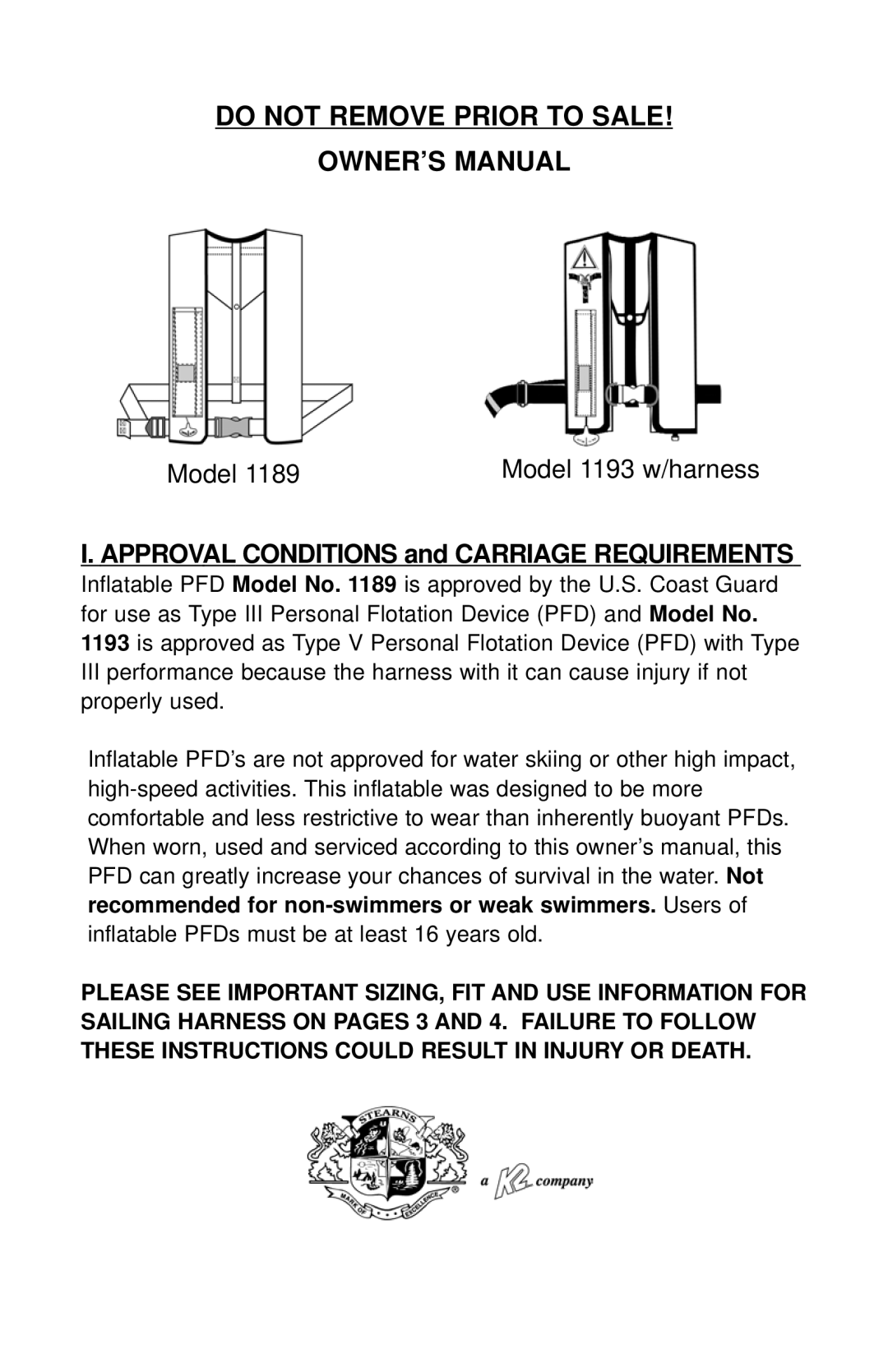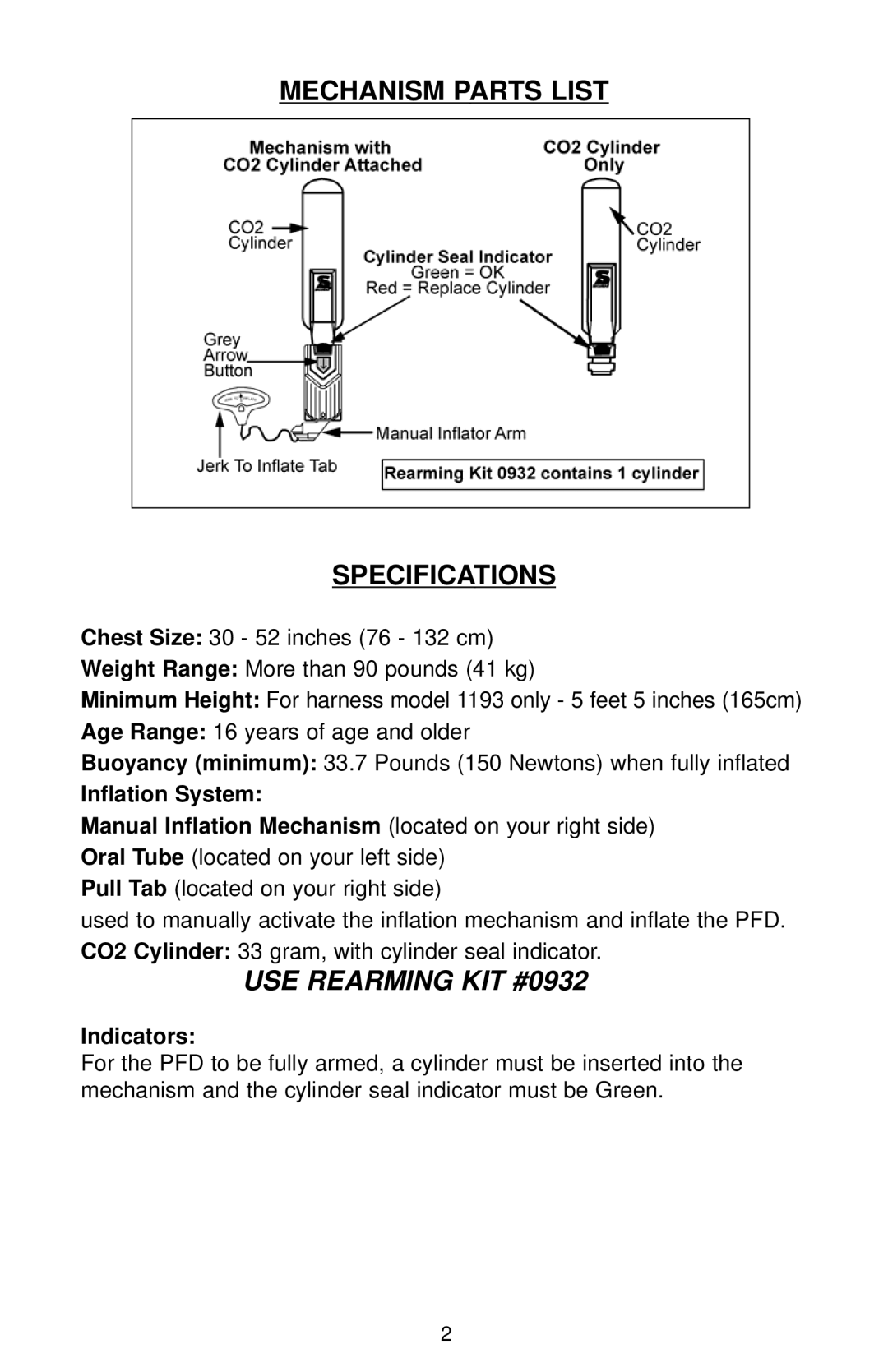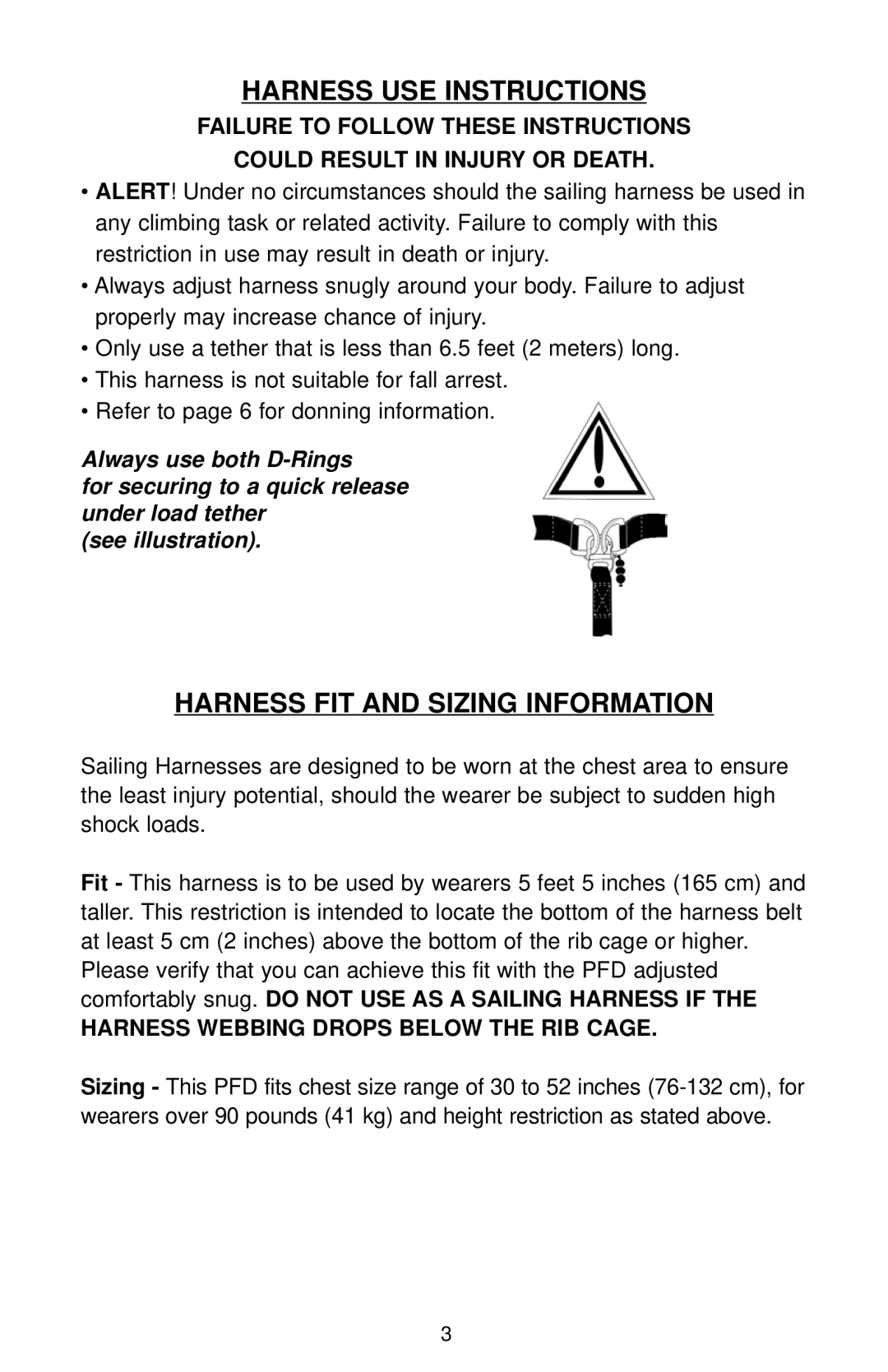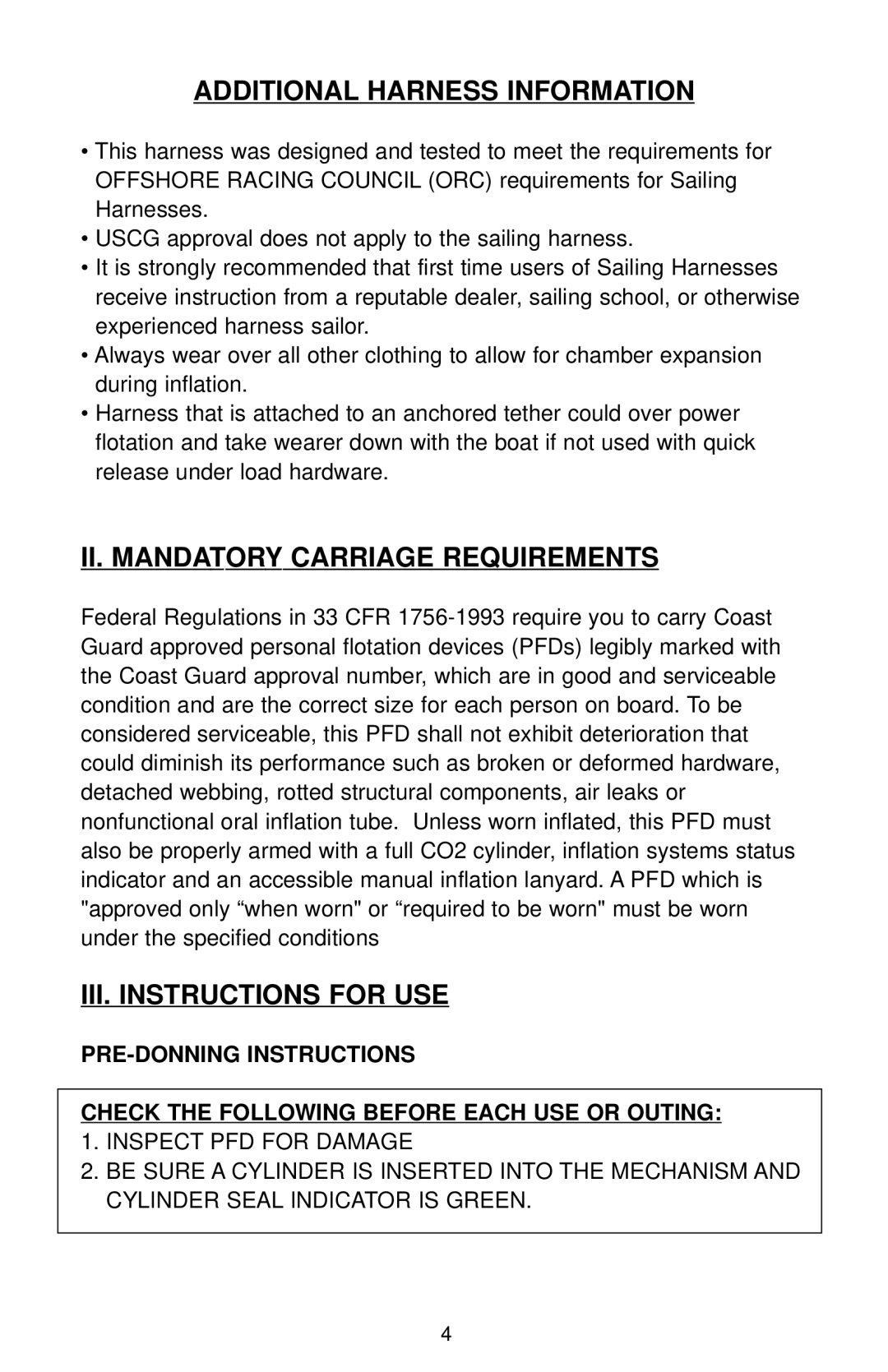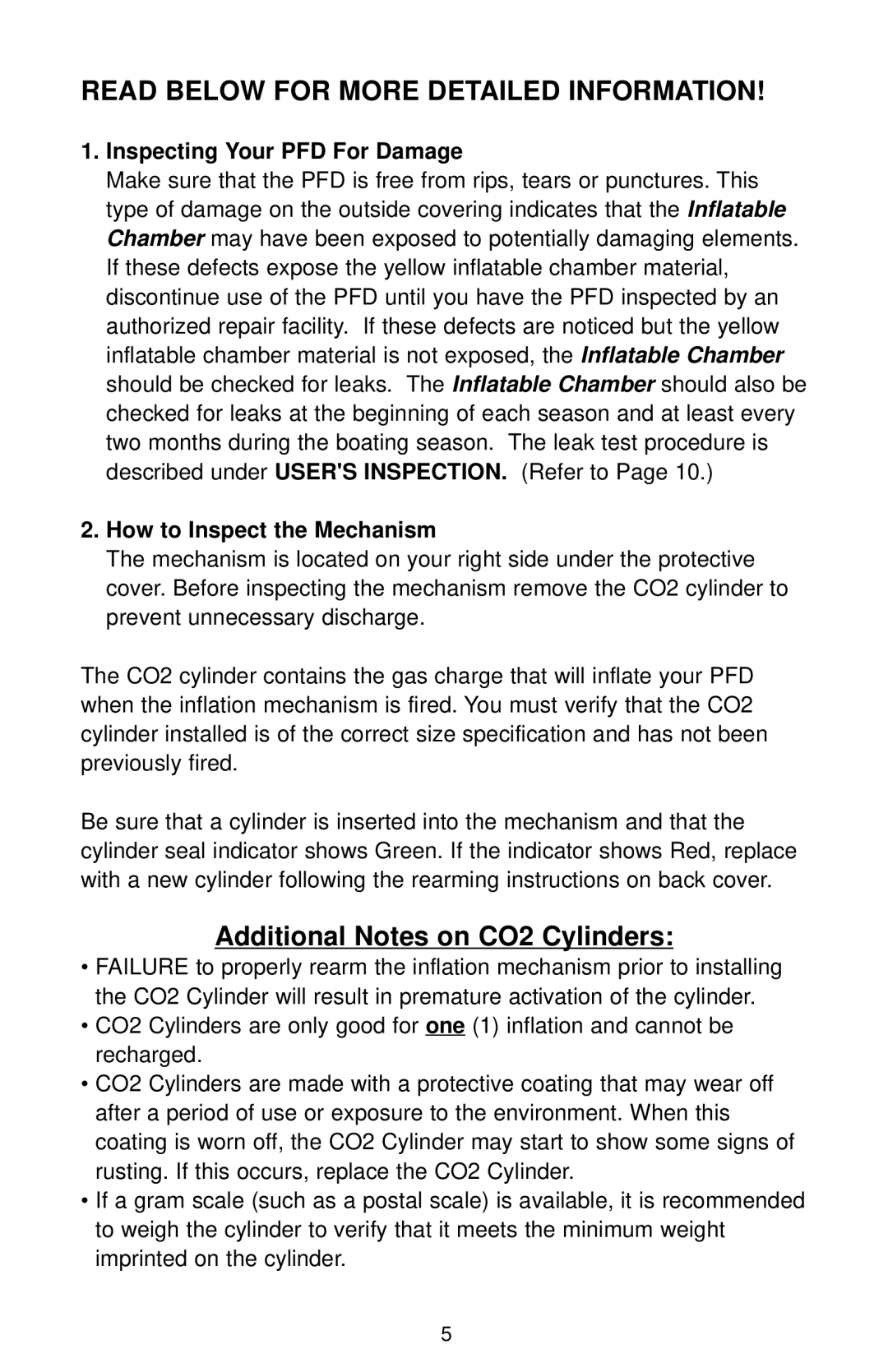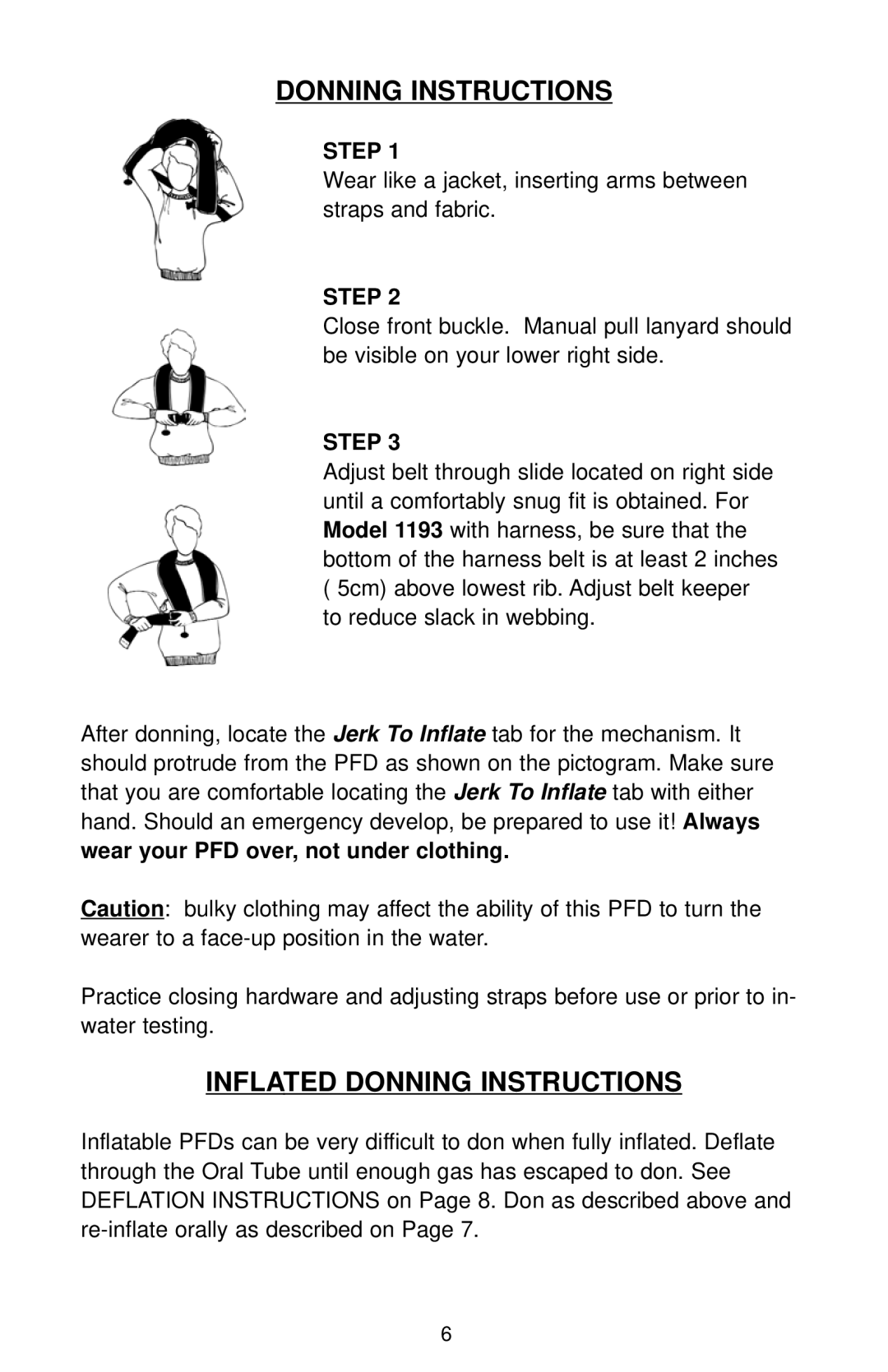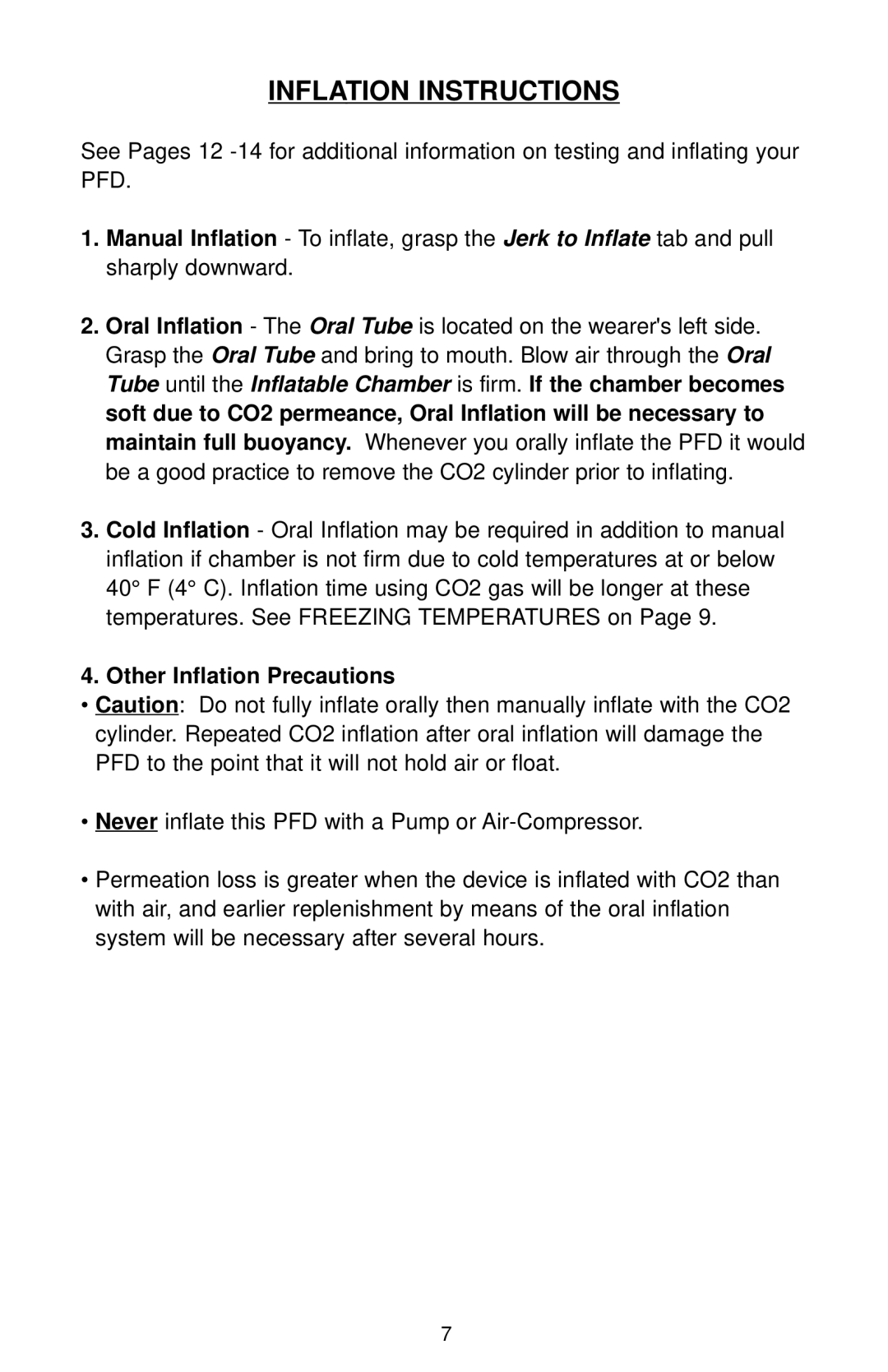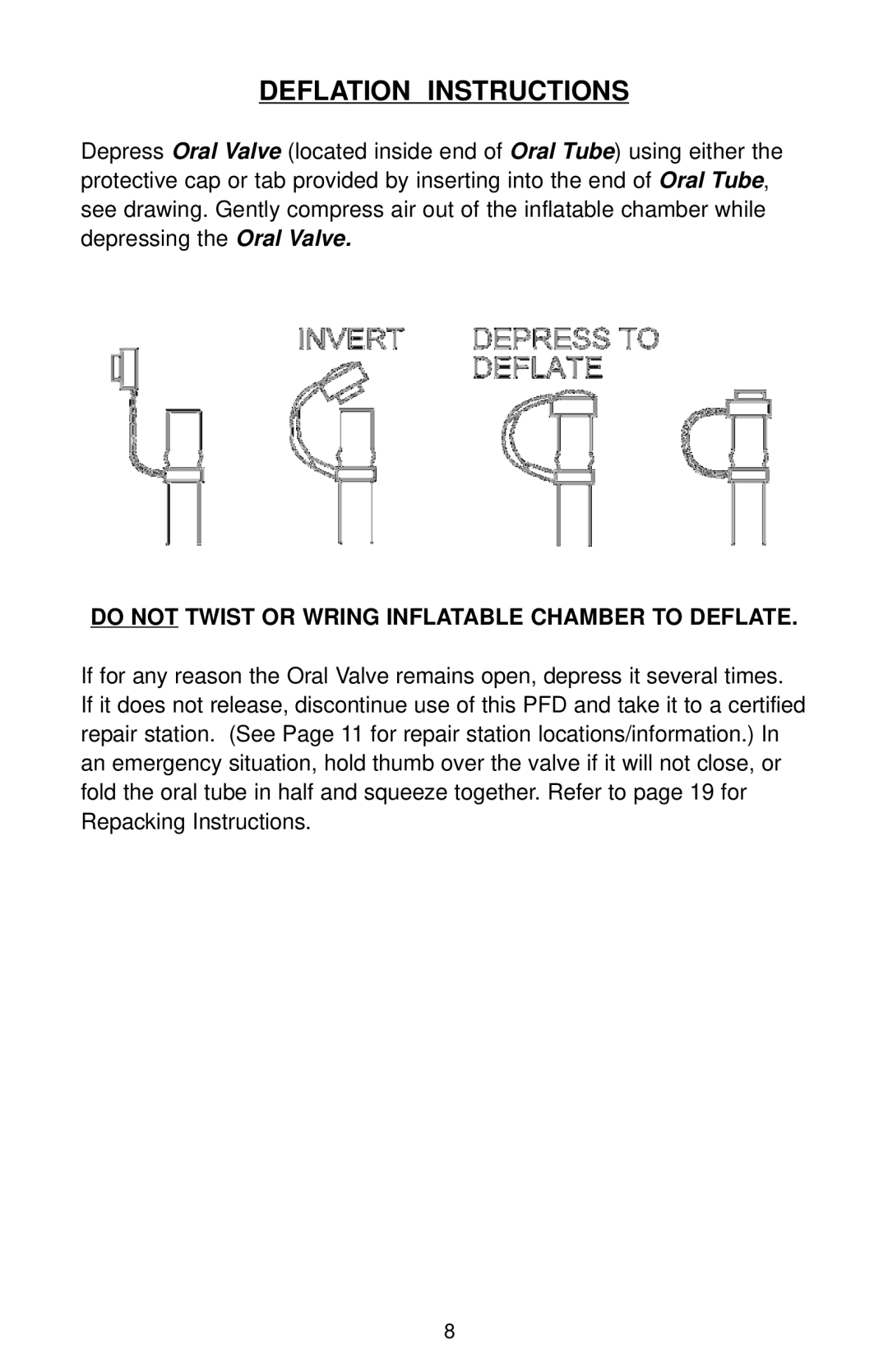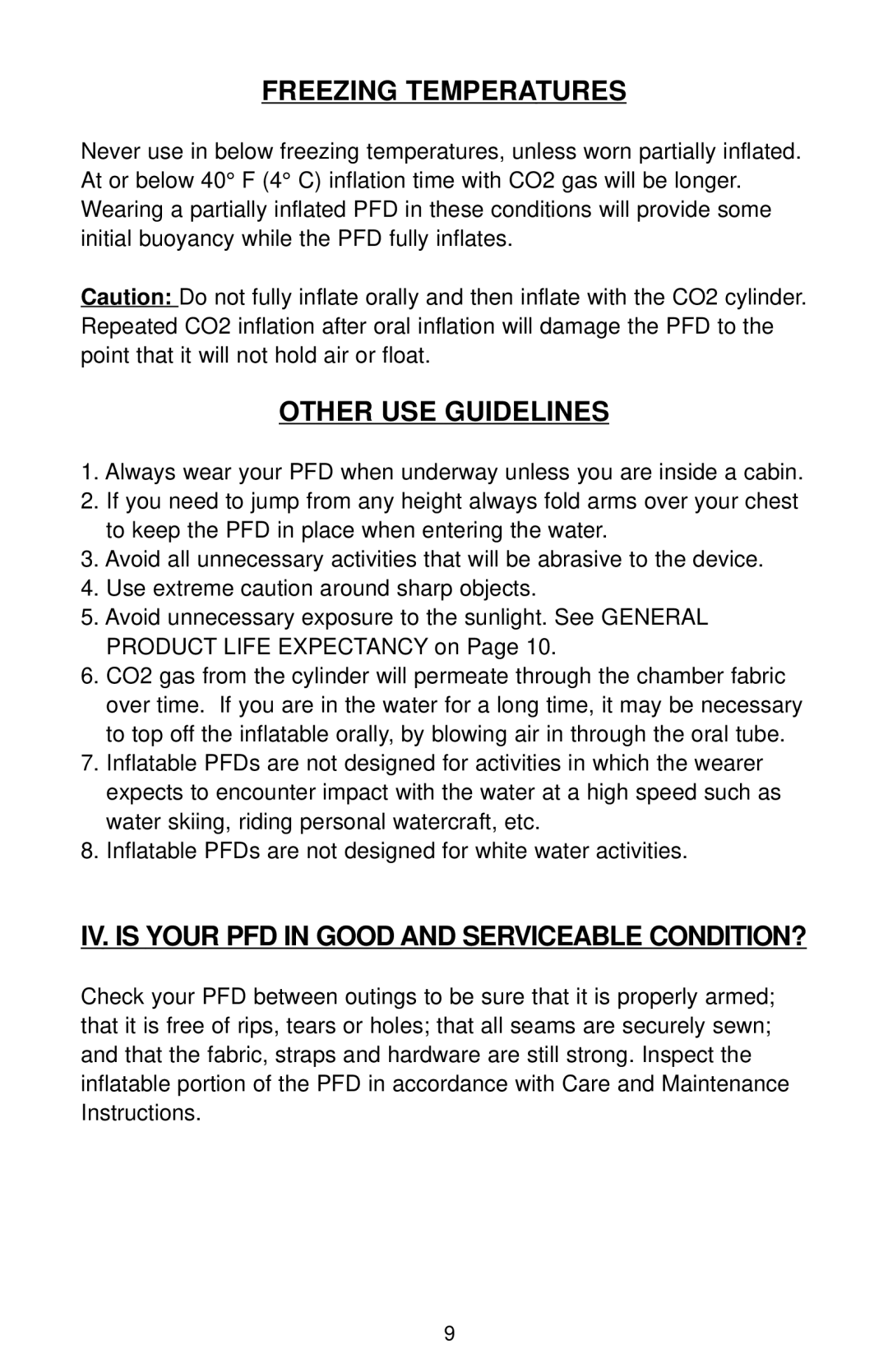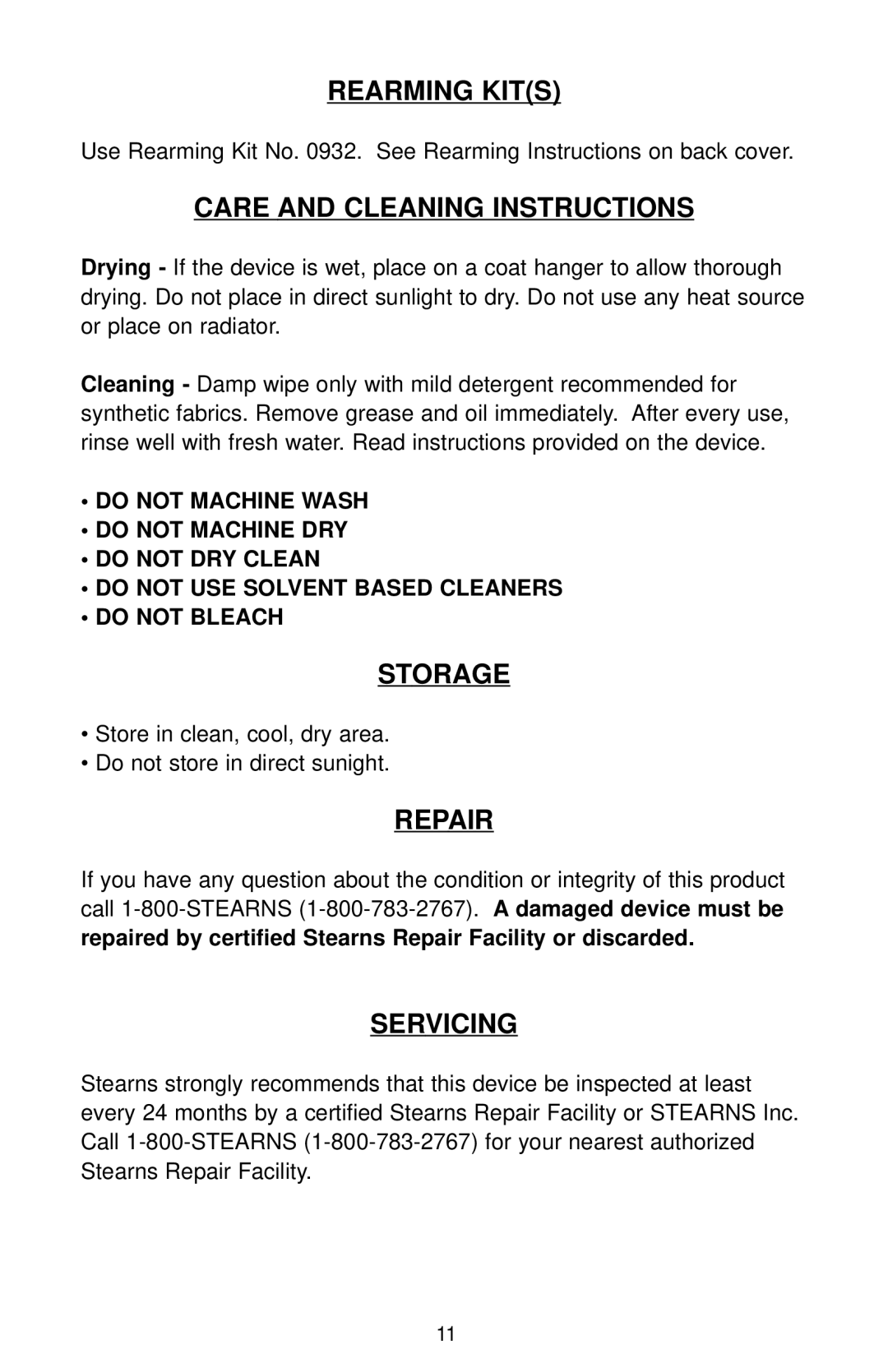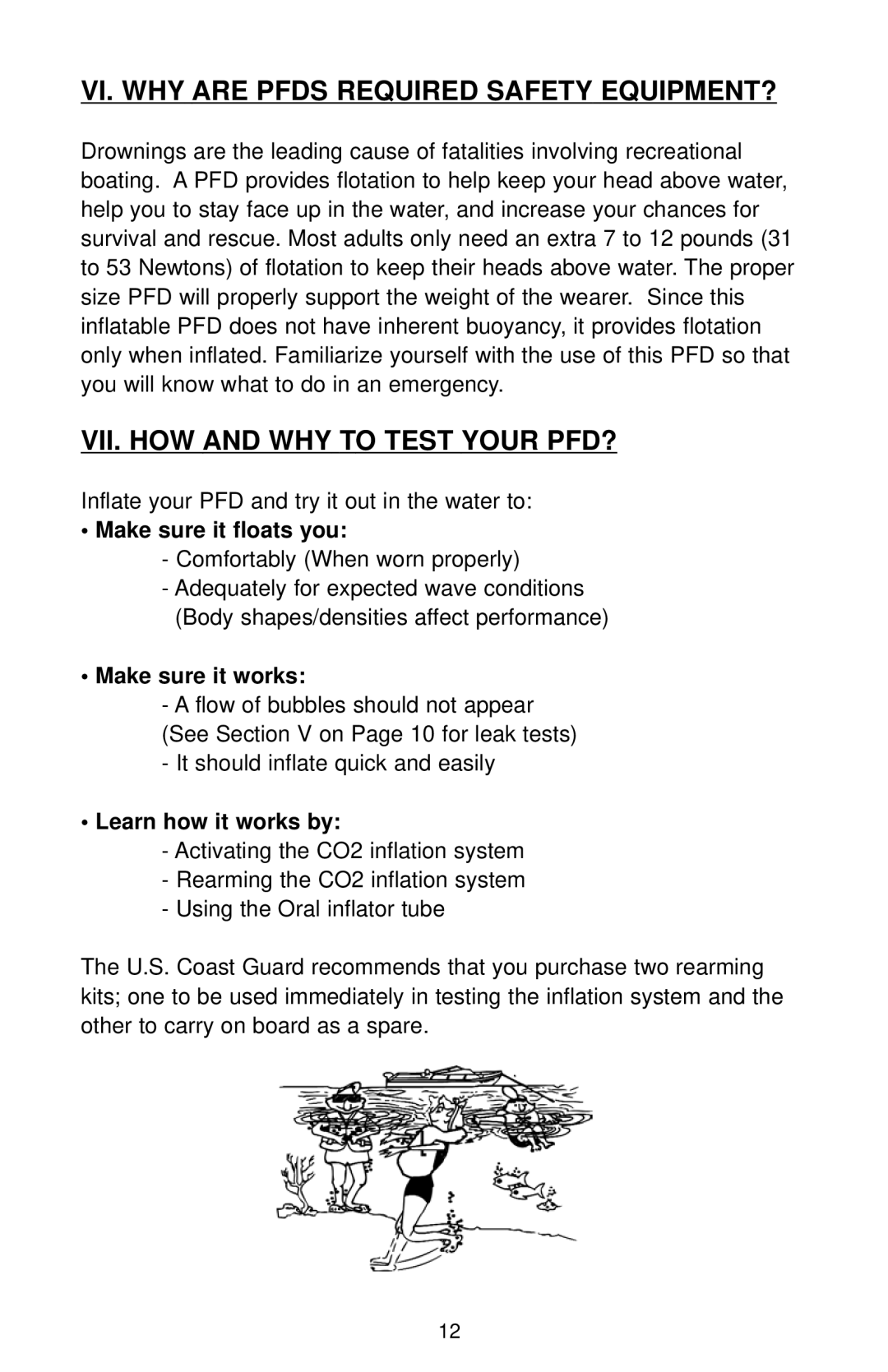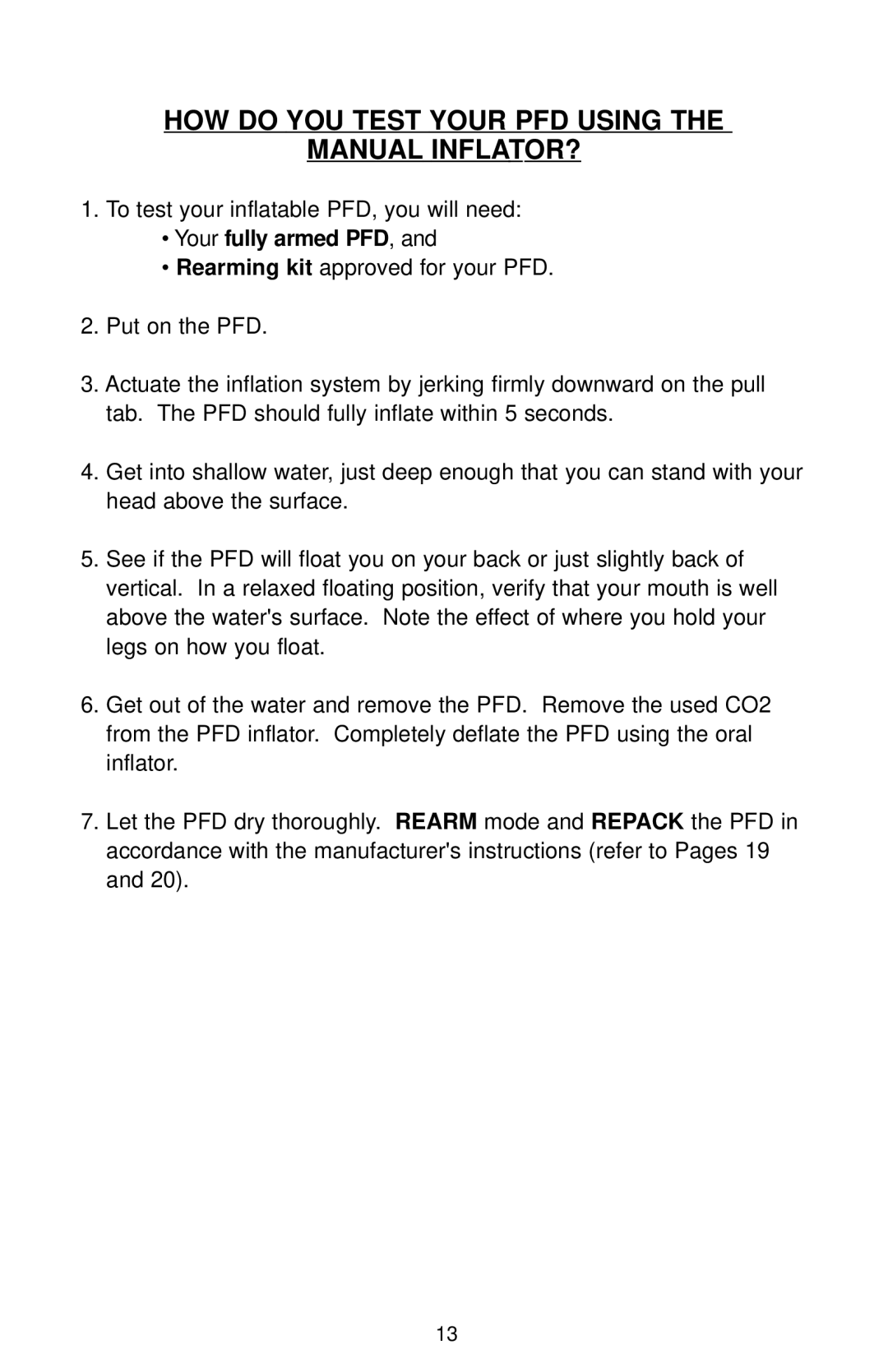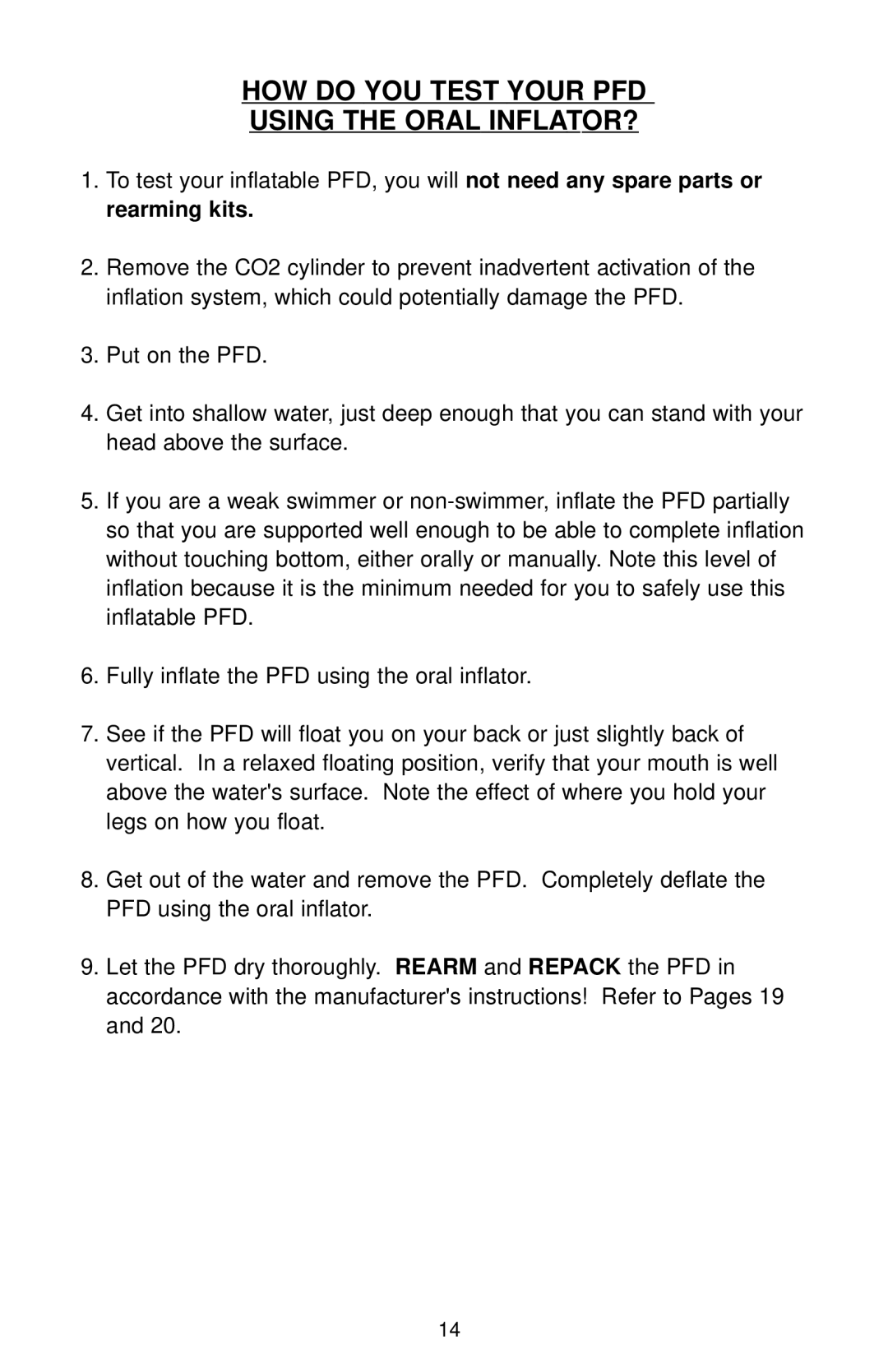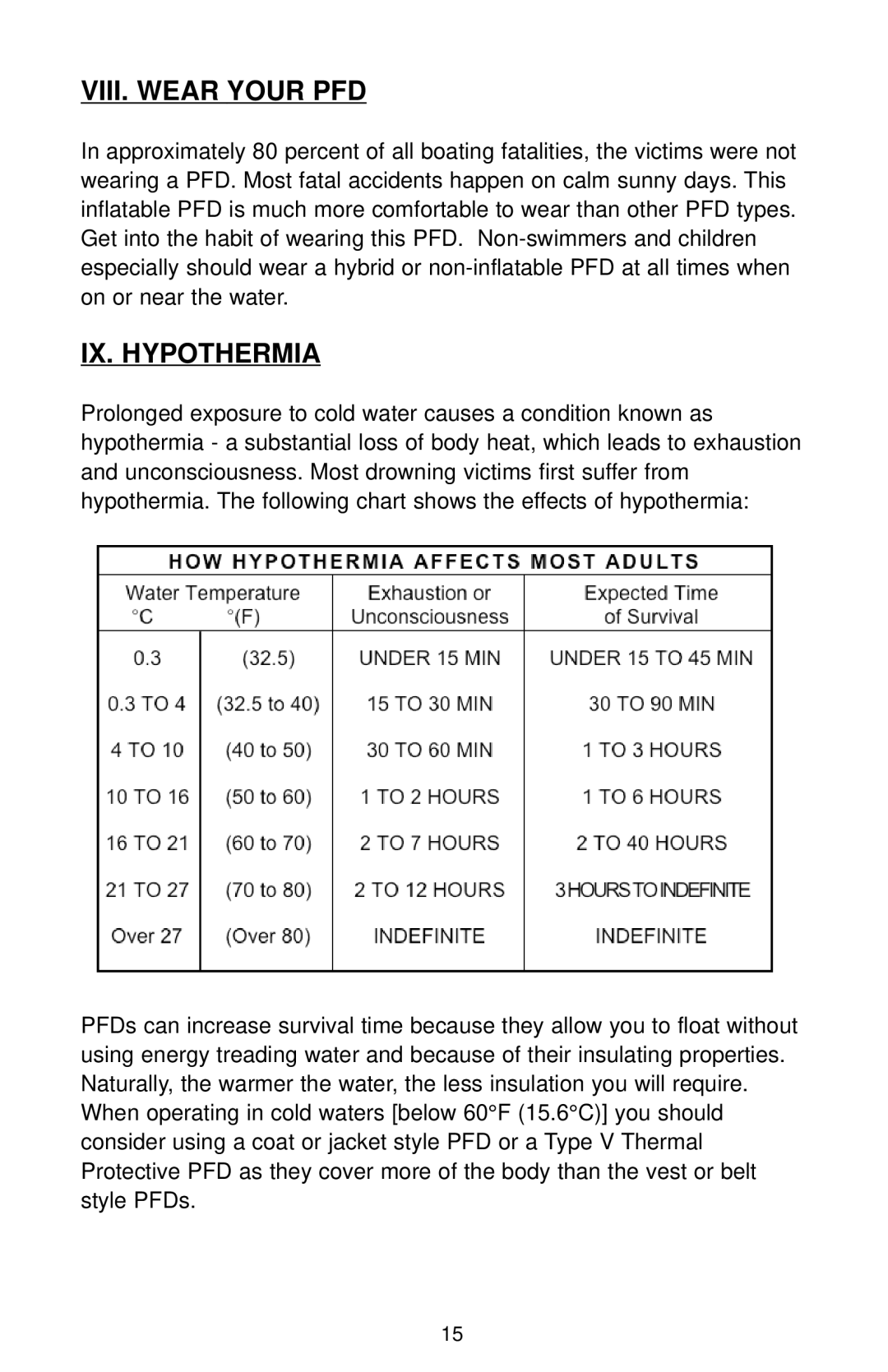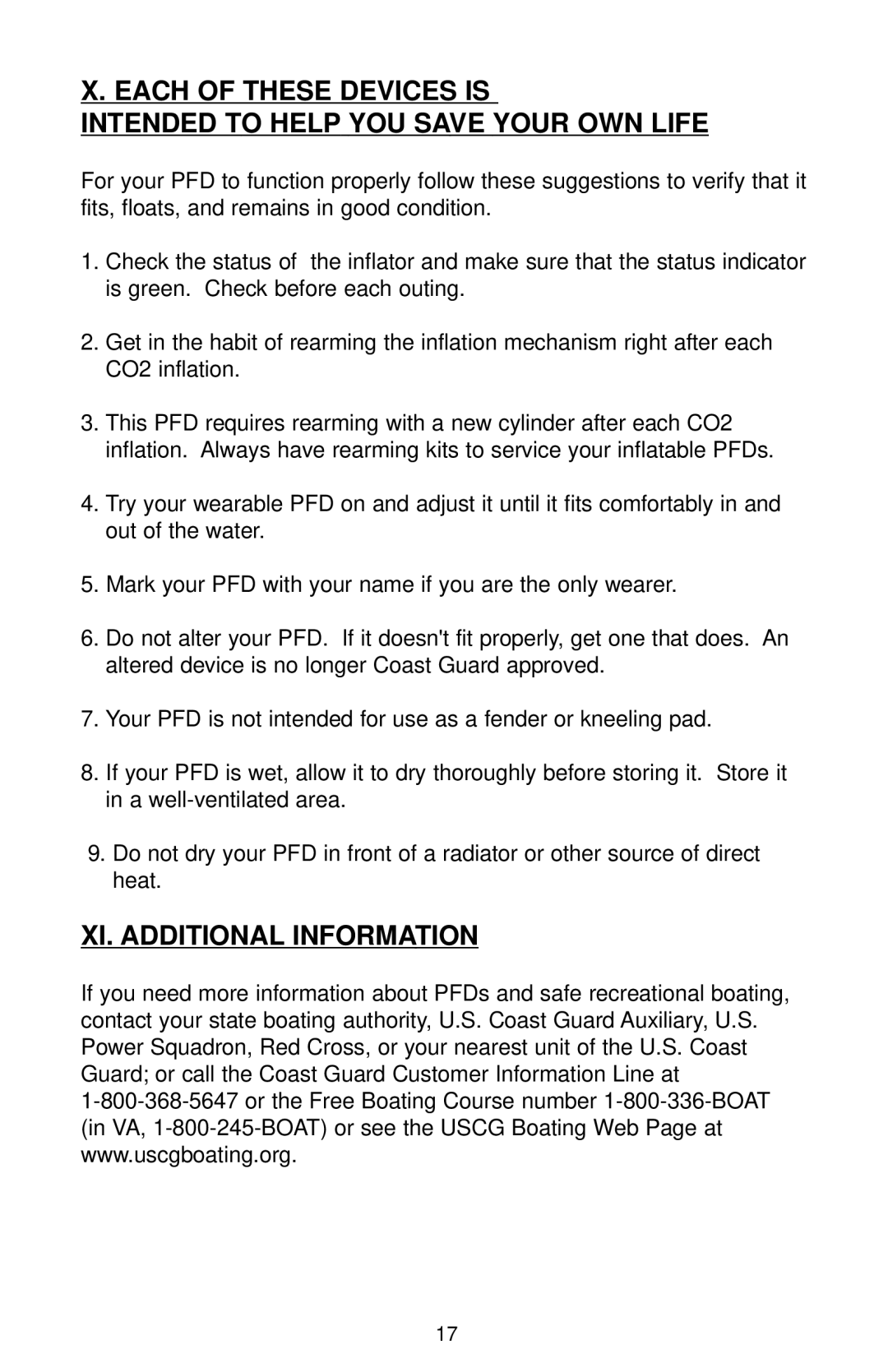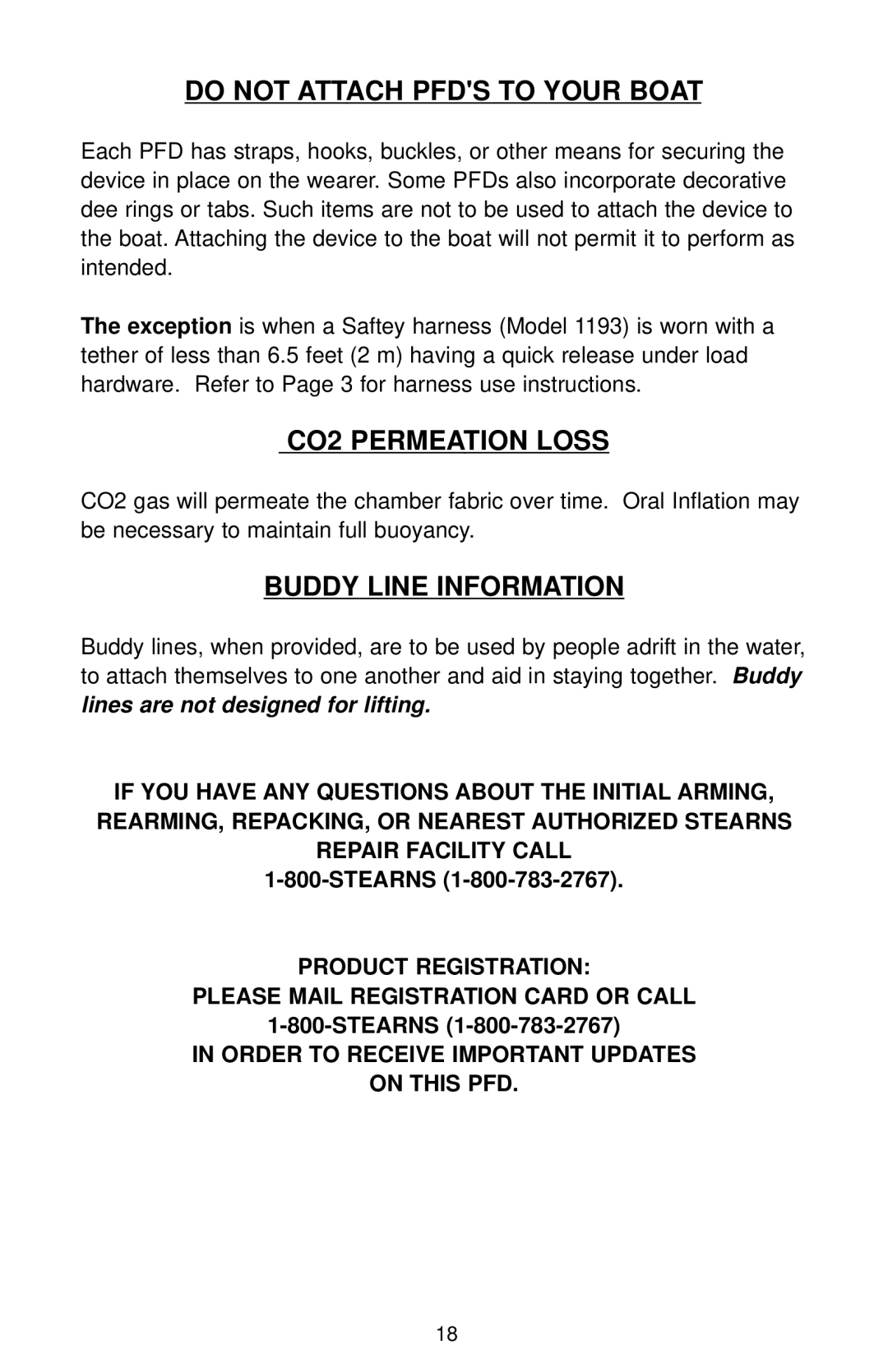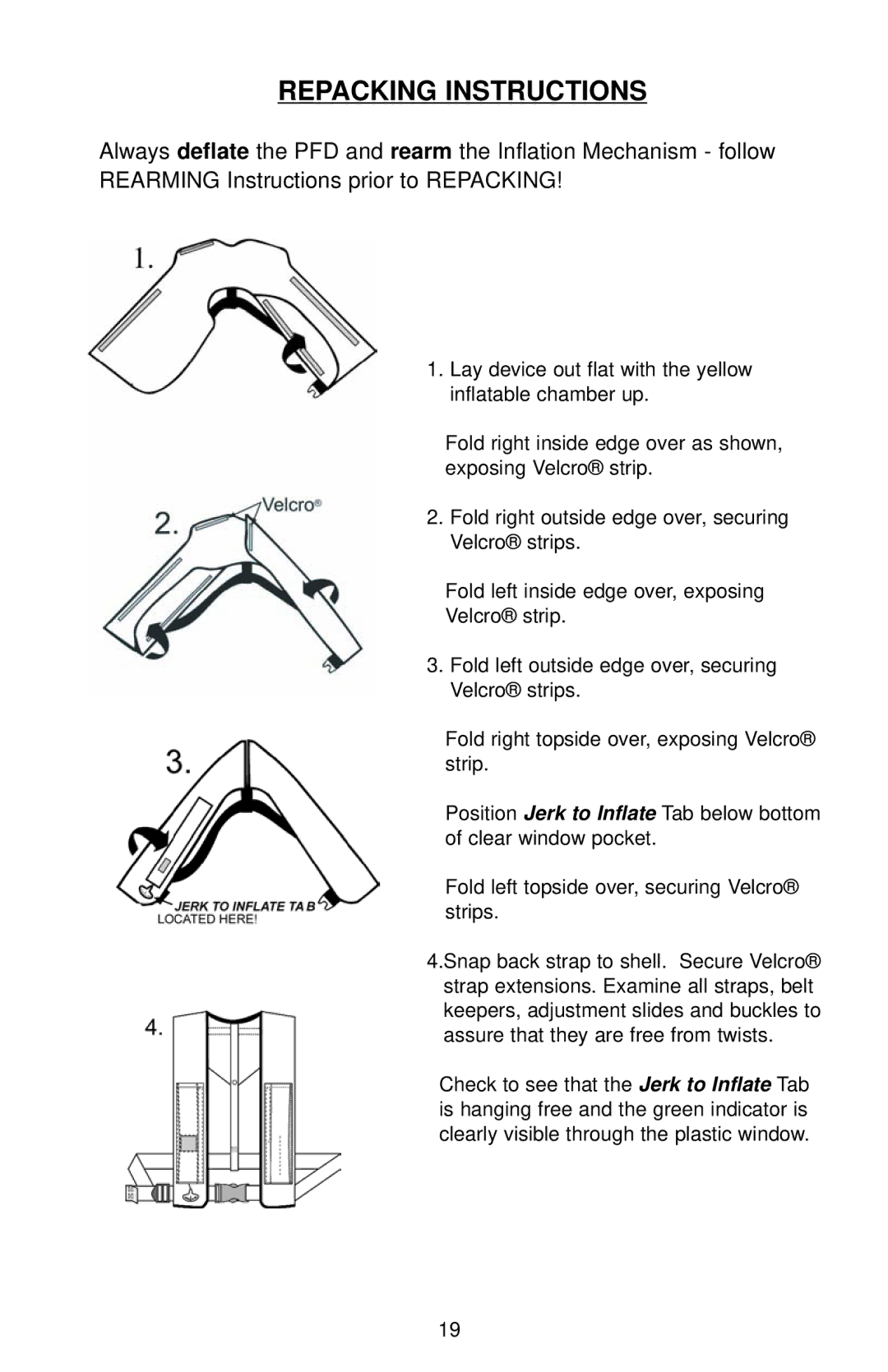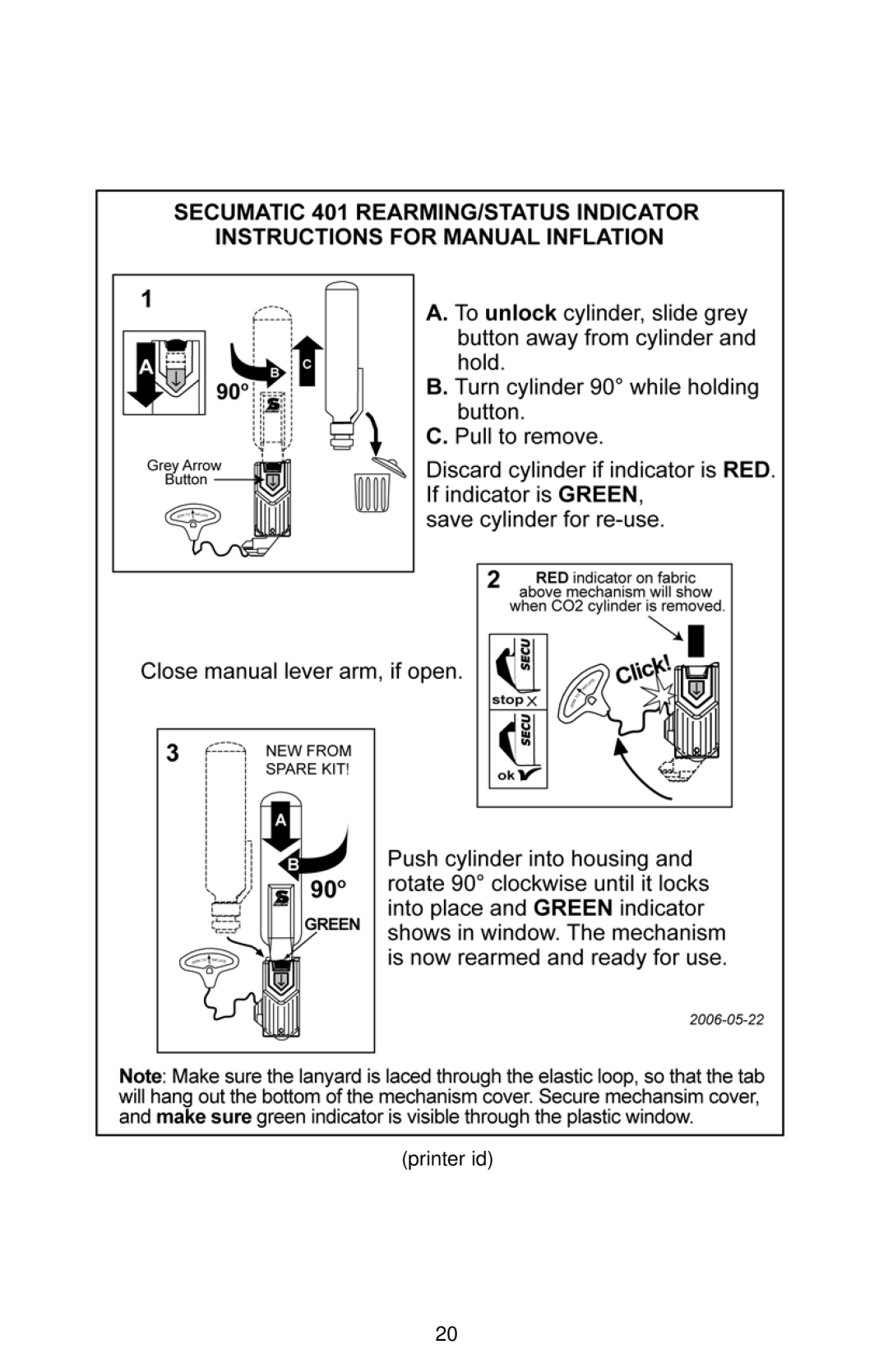READ BELOW FOR MORE DETAILED INFORMATION!
1.Inspecting Your PFD For Damage
Make sure that the PFD is free from rips, tears or punctures. This type of damage on the outside covering indicates that the Inflatable Chamber may have been exposed to potentially damaging elements. If these defects expose the yellow inflatable chamber material, discontinue use of the PFD until you have the PFD inspected by an authorized repair facility. If these defects are noticed but the yellow inflatable chamber material is not exposed, the Inflatable Chamber should be checked for leaks. The Inflatable Chamber should also be checked for leaks at the beginning of each season and at least every two months during the boating season. The leak test procedure is described under USER'S INSPECTION. (Refer to Page 10.)
2.How to Inspect the Mechanism
The mechanism is located on your right side under the protective cover. Before inspecting the mechanism remove the CO2 cylinder to prevent unnecessary discharge.
The CO2 cylinder contains the gas charge that will inflate your PFD when the inflation mechanism is fired. You must verify that the CO2 cylinder installed is of the correct size specification and has not been previously fired.
Be sure that a cylinder is inserted into the mechanism and that the cylinder seal indicator shows Green. If the indicator shows Red, replace with a new cylinder following the rearming instructions on back cover.
Additional Notes on CO2 Cylinders:
•FAILURE to properly rearm the inflation mechanism prior to installing the CO2 Cylinder will result in premature activation of the cylinder.
•CO2 Cylinders are only good for one (1) inflation and cannot be recharged.
•CO2 Cylinders are made with a protective coating that may wear off after a period of use or exposure to the environment. When this coating is worn off, the CO2 Cylinder may start to show some signs of rusting. If this occurs, replace the CO2 Cylinder.
•If a gram scale (such as a postal scale) is available, it is recommended to weigh the cylinder to verify that it meets the minimum weight imprinted on the cylinder.
5
